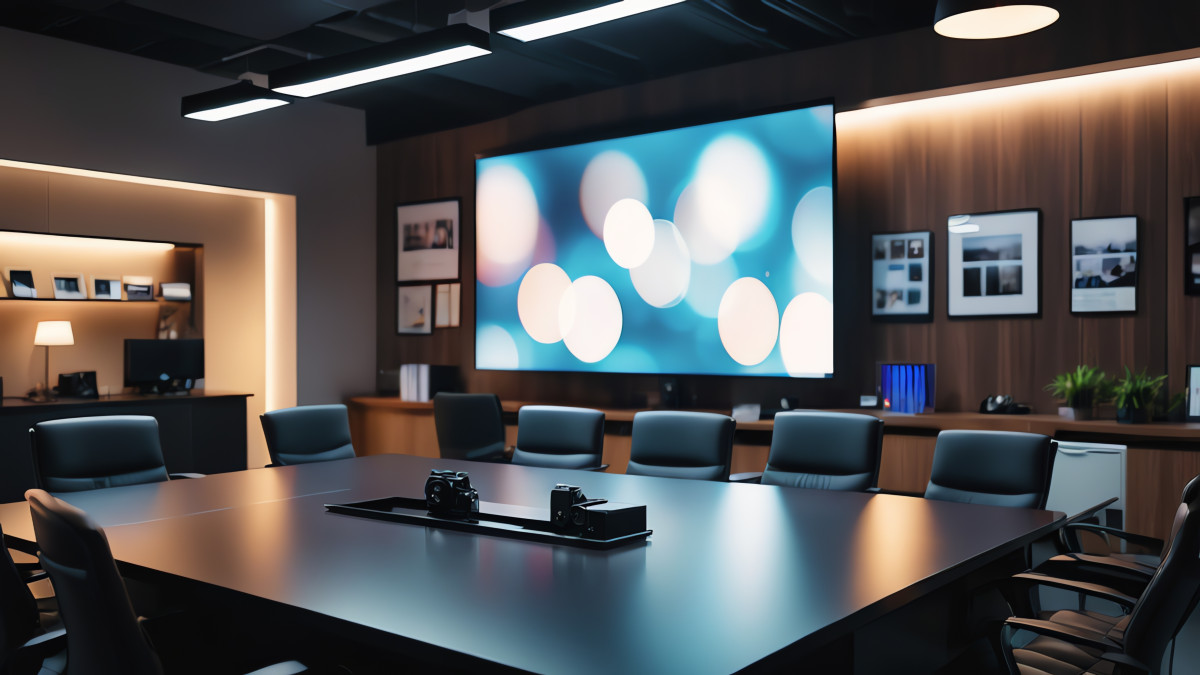
In New York City, commercial AV systems are no longer just for conference rooms—they’re the backbone of modern business communication, customer engagement, and operational efficiency. Whether it’s a video wall in a Midtown retail store or a fully integrated boardroom in a Financial District office, AV installation needs to work seamlessly and look sharp while doing it.
Planning a commercial AV setup in NYC takes more than picking a few screens and speakers. That’s why this AV installation guide for NYC businesses walks through what business owners and contractors should consider—from design strategy to equipment selection and long-term use.
Why AV Installations Matter in NYC's Fast-Moving Business Environment
In a city that runs on speed, clarity, and professionalism, AV systems can’t afford to fall short. Businesses rely on clear audio for client calls, high-definition displays for presentations, and immersive environments that help sell, teach, or entertain.
The problem is, many AV setups fail because they weren’t designed for the realities of NYC buildings: tight layouts, shared walls, high ceilings, and older infrastructure. Add in multiple stakeholders—from IT teams to architects—and a poorly coordinated AV install can become a source of frustration instead of function.
That’s why smart AV installation in New York isn’t about plugging in tech—it’s about aligning technology with business goals, space design, and user behavior.
1. Understand What an AV System Actually Includes
Before getting into installation, it's helpful to know what goes into a commercial AV system. Whether the goal is better communication, better ambiance, or better engagement, the right system is built from a few core components:
Video Displays: TVs, projectors, digital signage, and LED video walls
Audio Components: Speakers, amplifiers, mics, mixers
User Interfaces: Wall panels, remote controls, mobile apps
Signal Management: Matrix switchers, AV over IP, control systems
Cabling and Infrastructure: CAT-6, HDMI, fiber optics, audio cabling
Source Devices: Laptops, media players, signage servers, Zoom/Teams integration
In a corporate office, this might mean a single conference room AV setup. In retail, it could involve a network of digital signs and ambient music systems. Each environment demands a different layout—but the building blocks remain consistent.
2. Plan AV Systems Based on the Space, Not Just the Gear
Many AV systems fail not because the gear is bad, but because it’s poorly matched to the room. The acoustics, dimensions, lighting, and layout all influence how audio and video equipment performs.
For NYC spaces, consider:
Ceiling height and structure: Impacts speaker coverage and mounting options
Glass walls or hard surfaces: Create audio reflections that require tuning
Ambient light: Affects readability of displays and projection visibility
Room shape: Irregular layouts require strategic mic and speaker placement
Professional AV design ensures that technology works with, not against, the space. Sound quality and image clarity can vary dramatically depending on how well the system is integrated into the architecture.
3. Choose Equipment That’s Commercial-Grade
Not all AV hardware is created equal. Consumer-grade gear might look appealing at checkout, but it rarely holds up under commercial demands.
For businesses that operate long hours or host frequent meetings and events, commercial-grade equipment from manufacturers like Bose, JBL, TOA, Crestron, and Samsung delivers:
Better durability
Longer warranties
More flexible integration options
Remote monitoring and control capabilities
NYC businesses benefit most from AV systems that are built to scale and easy to maintain. Commercial-grade gear also ensures compatibility with automation, access control, or enterprise-level networking systems already in place.
4. Don’t Skimp on Structured Cabling
One of the most overlooked aspects of audio video installation is the cabling that runs behind the scenes. In NYC buildings, cable routing often competes with HVAC, plumbing, and electrical for space. Planning early helps avoid problems later.
Cabling should include:
CAT-6 or higher for networked AV components
HDMI or fiber optic lines for high-definition displays
Speaker wire rated for commercial use
Control cabling for touch panels and automation
Properly labeled, secured, and tested cabling ensures better performance and makes it easier to upgrade or service in the future. And when space is tight—as it often is in Manhattan and Brooklyn—efficient routing is non-negotiable.
Working with experienced audio video companies near me ensures all code, safety, and performance considerations are met.
5. Prioritize Simplicity and Ease of Use
Even the most advanced AV system is useless if no one knows how to operate it. In commercial spaces, systems should be intuitive, consistent, and fast to activate.
What helps:
Touch screen control panels with presets
One-button start for meetings or presentations
Clearly labeled inputs and ports
Integrated scheduling tools (for rooms or signage)
Whether it’s a front desk associate cueing up digital signage or a manager starting a Zoom call, AV systems should work with minimal effort or training.
6. Plan for the Future, Not Just the Present
NYC businesses evolve fast. Offices expand, retail spaces pivot, and tech platforms change. Your AV installation should have room to grow—both physically and digitally.
Future-ready AV systems offer:
Scalable control systems
Remote software updates
IP-based infrastructure (AV over IP)
Easy-to-add components or zones
Avoid hardwiring in limitations. A conference room that only supports one video input, or a restaurant system that can’t segment audio by area, will eventually lead to rework and frustration.
Good AV design isn’t just about today—it’s about supporting your business five years from now without ripping out the ceiling.
About Streamline Telecom
Streamline Telecom is a trusted AV installation provider serving businesses across the New York City metro area. With deep experience in telecom infrastructure, security, access control, and structured cabling, the company brings a coordinated, professional approach to commercial AV solutions.
Streamline installs everything from digital signage in retail spaces to video conferencing systems in corporate boardrooms. With a team that values timeliness, communication, and work that stands the test of time, Streamline Telecom is known for making AV systems that are as reliable as they are easy to use.




